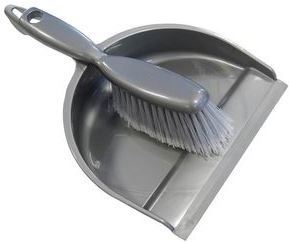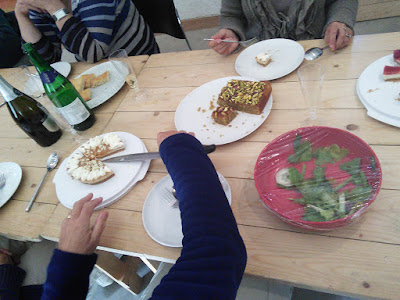Today was a wet and chilly day at Heron Corn Mill. All wrong for the last of the mill's "boon" days this year. The volunteers and staff are supposed to get together for a jolly time sprucing the mill up inside and out, ready for the coming spring or winter, delete as appropriate. In weather like today, it's more a case of "someone has to do it". But appearances, as so often, were deceptive today - and how!
There was a list of jobs, and names of victims - sorry, volunteers - to do them. Audrey's name featured next to "get rid of the mole hills", a job for which I doubt there would have been much competition. My name was ominously next to "pull up Himalayan Balsam". This would have been a high risk activity, because I would just as likely pull up rare orchids, herbs, saplings and maybe even the odd mole as Himalayan Balsam. But it was not to be.
The "B" list of less glamorous (and less dangerous) indoor jobs came to the fore, and I was dispatched to the top floor of the mill with orders to sweep it to within an inch of its life. This is my kind of job. I know one end of a brush from the other, and I can do dust with the best of them. After about half an hour I was in a muck sweat and had to go and get a cuppa. David, the other sweeper, who was manfully sweeping with a mere dustpan and brush, seemed to have more stamina than me, and battled on. "Maybe he'll steal my brush" I thought, giving silent voice to my secret wish.
Fortunately, while imbibing the cup that refresheth and not inebriateth, I was pointed at an uber-brush, the brush of Holy Dream, with an industrial-width brush head. This made the rest of the job much more pleasant.
On the way to the barn for my cuppa, I passed the younger generation of conscripts, who had a nice looking job, namely collecting leaves off the paths. "I could do that" I thought, like Yosser Hughes. "Gizza cuppa and a KitKat, and a job."
But first, I thought I would check out the fish pass. Rumour had it that recently there was a day, when waters ran high, that the sound of fish had been heard, plopping into the steps of the fish pass. That is undoubtedly the mot juste - plopping.
My luck was in, and I saw a couple of fish making their break for freedom. One flew majestically straight over the water gushing through the middle of the step; one flew sideways to land in the relatively quiet waters at the edge; and one landed atop the side of the step, where little water was flowing over, and had to scriggle over the bare stone, all flap and puff, panic and wild straining. The drama of it!
When I tore myself away, I found the tool shed door open, so I selected a nice heavy rake, and set to work on the lower paths, which were awash with leaves, to mix a metaphor. After a few wheelbarrowfuls of leaves it was time for a hearty lunch in the barn - a duo of soups, a quartet of sandwiches, and a veritable brass band of cakes for afters.
After that there was nothing to do but point a couple of passing visitors at the fish pass and advise them not to miss the "greatest show on earth" - jumping fish! I went back down with them, and there was a lot more water than in the morning. Now each step was overflowing right across its width, not just through the lowered part in the middle. And each step looked shallower than before, although the water was certainly flowing much faster.
Whatever it was, the fish seemed to like the conditions in the afternoon, and there was a steady stream of candidates all wanting to take a shot at the great migration stakes. There were dozens and dozens of them even during the 20 minutes or so that I stood and watched. Trout and salmon I recognised from the fish counter at Asda, although they were considerably more lively at the Heron Corn Mill. And from tiddlers of about 6 inches in length, these boys went right up to about 20 inches.
This was sport of the highest order! Skill, strength, persistence. These fish know no danger, they are all commitment to reaching journey's end. This really is what the TV people call an "incredible journey" and they don't much care who is watching. Fortunately for them, the crowd at the Heron Corn Mill was more interested in cheering them on their way, like Nicholas Parsons.
There were no herons, bears or fishermen amongst those present, just proud mums and dads, failed high jumpers and long distance cyclists. Flag wavers all.
I haven't had so much fun in years! What a boon on a boon day. I commend it to the house!








































































